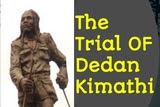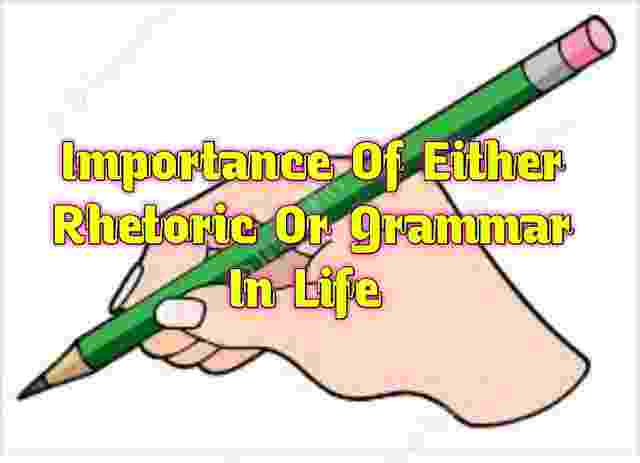characterisation in the play
"The trial of Dedan Kimathi".:
---The characters in "The Trial of Dedan Kimathi" are more of type than those endowed with traits that signify individuality. The Preliminary Notes make it very clear : "There is impersonation, merging of characters and reflection of history emphasising the complexity, duality and interrelationships of people and events. A character like Shaw Henderson, for instance, can be played as a judge-Prosecutor and member of the Special Brach. He is also the enemy- friend of the Africans." Note the use of compound word-formations like Judge-Prosecutor' and "enemy-friend", highlighting the apparent contradictory duality contained in them which in turn is a significant pointer to the audience/ readers to distinguish between the mask and the reality of colonial administration. In no other characters is the type mode more evident than in those of the Boy, the Girl and the Woman. In fact, all three of them have not been given any names, which as we know is the first sociological device to differentiate between individuals. Named simply as 'Boy', 'Girl' or 'Woman', they represent all persons in Kenya belonging to their respective categories.
This is neither an oversight nor a coincidence but is quite deliberate. It is quite apparent from some of the stage direction given by the authors to those directing it for performance. In the beginning of the Third Movement, for instance, when the Boy and Girl and the Women move 'a little away off' on the stage to confer, the stage directions are - "Both Girl and Boy sit at the feet of the woman. It should be symbolic: the woman now represents all the working mothers talking to their children." The authors had all this - the woman representing all the working mothers - worked out from the very conceptioni of the character. It is apparent from the description they bestow upon her wheri she is first introduced: "She is between thirty and forty years of age, with a mature but youthful face, strongly built. Good looking. She wears a peasant woman's clothes and is barefoot. Though apparently a simple peasant, the woman is obviously world-wise, and perceptive of behaviour and society. Throughout, her actions are under control: her body and mind are fully alert." The characteristics bestowed on her. She is versatile and full of energy in her responses to different roles and situations are borne out amply when Johnnie, the soldier notices her kondo - the sisal basket - and is about to discover - among others - a parcel wrapped in paper. The stage directions tell us, 'the woman is talking, cunningly truing to distract Johnnie'. Again, after Johnnie has discovered the bread wrapped in paper and is about to break it into two - we come to know later that a gun had been hidden in it-the woman changes her stance suddenly, changing it into one of 'supplication and feminine submissiveness'. The stage directions tell us - "The woman dramatically kneels on the ground, almost reaching out for his legs.. She talks all the time.'
When, in the Third Movement, the Girl and Boy catch up with her disguised as Fruitseller and the Boy accuses her of trícking him into carrying a gun, she explains "In the struggle, you learn to adapt to changed circumstances Yesterday was a day of setbacks. First the screening and the Johnniest walked into the mouth of a gun! Then, after we parted, I found out that the Fruitseller was among the ones picked in yesterday's morning raid. That vas a crucial contact gone. This upset all the plans. What was I to do? 1 dressed as a Fruitseller so that you would easily recognise me. The court adjourned sooner than I had thought: I then followed the crowd. I was going to speak to the Warder, another contact. I found that he too had been transferred to another place. So only you remained. I kept on looking for you. Between here and Majengo, there is not a place I have not visited. Great risk: but the task once started must be completed." Earlier, on not finding the Fruitseller to whom he had been instructed by the Woman to hand over the bread, the Boy representing the stereotypical thinking about women and their lack of courage-soliloquises. Still earlier, when the Boy after telling his life story had observed that he did not understand the reason behind the exploitation of 'millions of labouring men and woman of Kenya', the woman – true to her role as the mother of all children - had explained to him. It is because of this understanding of and dedication to the cause of the freedom struggle that Kimathi pays a handsome tribute to her: In fact, Dedan Kimathi recognises through the Woman - the contribution made by woman in Kenyan freedom struggle. Like in the case of the Woman, so in that of the Boy and Girl also, the authors have created characters that would represent the Kenyan youth in general rather than individual persons. Once again, it is for this reason that they too have been identified simply as Boy and Girl rather than with individual names. When the Woman first finds the Boy chasing the Girl, catching her, handling her roughly and shouting to kill her, she berates him for behaving like an animal. The Boy protests and explains his reasons for being harsh with the Girl. Then, he goes on to narrate to her how his mother had died during childbirth and his "father was driven away from Mbari land in Nye by one of his relatives who worked as a court interpreter. Now that man a big government chief and a big landowner... The man was clever at court cases and bribed the magistrates." The Boy then tells here how his tattiet ind he went to Nairobi: The Woman's reaction only confirms that the Boy represents not omy himself but also most Kenyan ybuth. The Boy is confused and does not understand when the Woman telns him that she too used to be like him - 'Fighting... Drinking... Fighting..
Drinking..' until the day she heard "The call of our people. The humiliated, the injured, the insulted, the exploited, the submerged millions of labouring men and women of Kenya'. Then transformation of the Boy begins and when the woman assigns to him the task of carrying a loaf of bread to a Fruitseller he readily accepts. However, doubts continue to haunt him from time to time - when, for instance, the Boy and Girl discover - accidentally – that the bread had a gun hidden in it and again when they are not able to find the Fruitseller. But then each time, the words of the woman -'the day you'll understand... that day, my son, you'll become a man' - come back to her in the form of a voice he hears and his resolve returns: The culmination in the Boy's evolution is reached when after Dedan Kimathi has been sentenced to death by Judgė in the last scene of the play, the Boy and Girl suddenly enter the court, break the bread, pull out the gun and shout in unisor - 'Not dead'. Suddenly it is all dark on the stage during which 'A loud shot is heard' and when the light returns, 'the stage gives way to a mighty crowd of workers and peasants at the centre of which are Boy and Girl, singing a thunderous freedom song. The story of the Girl is never told in such details as that of the Boy but from the way she is found initially to be'scrounging' dustbins and roaming the hotels and tourist places and from the manner in which the Boy refers to her as 'a thief' and 'a slut only shows the kind of rough life she too has in the city. After the Woman has restored peace between them and after she has explained the real reasons behind their life and after she has assigned to them the task of carrying a loaf of bread to a certain fruit seller, the Girl shows signs of more maturity and better understanding of things. While the Boy has, at times, doubts about the intention of the Woman, the Girl is more rigid in her resolve. It is she who acts as his inspiration in the absence of the Womari. The end of the play shows them together-this time not 'scrounging' the dustbins but acting in unison in a mission to rescue Dedan Kimathi. Not only the characters of the Woman, the Boy and Girl but also the characters of soldiers, the Priest, the Banker, the Indian and the Politician are all drawn in the type mode, representing their class and the authors make their intentions clear by making them speak on behalf of their. community or class. Even Shaw Henderson has been assigned multiple identities to show how, under colonialism, various sections of the colonising community acted in collusion. Similarly, the character of Dedan Kimathi himself has been drawn more in terms of general characteristics of leaders of freedom fighters rather than specific individuals. This is also evident from the observations that the authors make in the Preface to the play: We agreed that the most important thing was for us to reconstruct imaginatively our history, envisioning the world of Mau Mau and Kimathi in terms of the peasants' and workers' struggle before and after constitutional independence. The play is not a reproduction of the farcical trial' at Nyeri. It is rather an imaginative recreation and interpretation of the collective will of the Kenyan peasants and workers in their refusal to break under sixty years of colonial torture and ruthless oppression by the British ruling classes and their continued determination to resist exploitation, oppression and new forms of enslavement." The authors let us to know that the efforts they put in to discover the real Dedan Kimathi as he existed in the minds and memories of the people among whom he lived and grew up and those with whose help he organised the struggle rather than in the official records, documents and history books written by armchair academics. Ngugi wa Thiong'o and Micere Mugo wanted to counter the colonial construction of Dedan Kimathi as a gun-toting terrorist who always thirsty for the blood of the innocent - be they Africans or Europeans. As spokesperson for the worldview of the authors, Dedan Kimathi, while fighting the colonial oppression has also the choicest invectives for their guile and guise of being friends of Kenyans. However, acting as the persona carrying the burden of speaking for the authors, Kimathi comes down most heavily on the class of collaborators - those Kenyans who joined hands with colonisers in order to hoodwink and put down innocent Kenyans. Thus, his harshest criticism is reserved for Gati, Gatotia, Hungu, Gaceru, Mwendanda and his own brother Wambararia Earlier, Kimathi had similarly chastised the Banker and the Indian- comparing them with the betrayer of Jesus Christ - when they visited him in the prison with tempting offers only if cooperated and let peace return to Kenya. Finally, a third and an equally significant objective in writing the play that the authors tell us in the closing words of the Preface is: "So the challenge was to truly depict the masses (symbolised by Kimathi) in the only historically correct perspective, heroically and as the true makers of history." Thus, to end our evaluation, the play is not only what the authors call, 'good theatre' but 'good history'. .












0 Comments